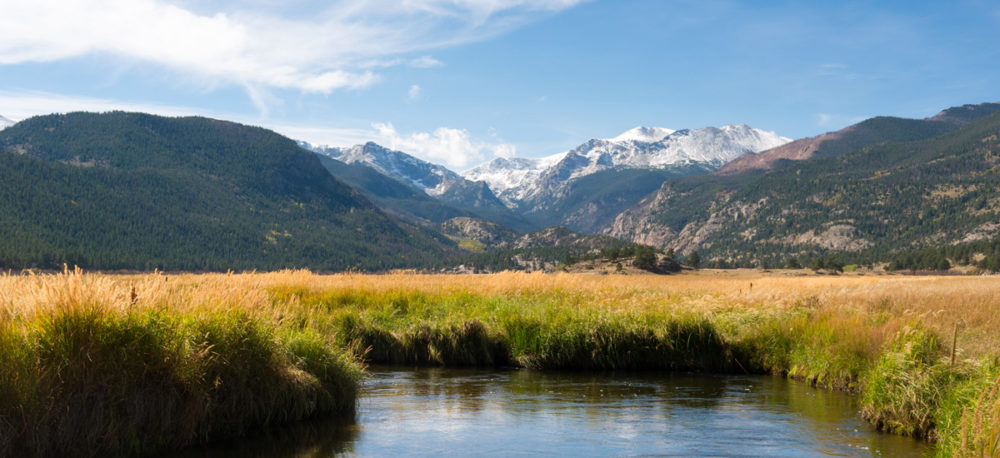If you are a cow, Colorado is an ideal place to be. Colorado’s climate is sunny and dry, and these characteristics have helped make the state fourth in the nation for numbers of cattle in feedlots. Weld County, just east of the Colorado Front Range mountains, is the fifth most livestock-rich county in the United States—beef and dairy, swine, sheep, chickens—and produces as much waste as 24.5 million people. With nearly 500,000 head of cattle, Weld County has twice as many cattle as people. Notable gases from the front and back ends of these animals include methane (a potent greenhouse gas), ammonia (fertilizer), hydrogen sulfide (rotten-egg smell), and other volatile organic compounds that produce more bad smells and are precursors of ozone. Emissions of gases from agriculture are unregulated by federal or state environmental protection agencies.
Ammonia: navigating the balance
Here we’ll focus on ammonia, one of many forms of reactive nitrogen (Nr). Nr is a required nutrient for all living things. When present in abundance, however, Nr also pollutes. Human society now produces more Nr than all natural sources combined. Some Nr rises into the atmosphere where it can be transported long distances and deposited far from its source.
This brings us to Weld County and its neighbors. These counties are unusual in many ways. Rich in agricultural resources, they are also close to Rocky Mountain National Park (RMNP), a crown jewel with towering peaks and an abundance of alpine meadows and lakes. RMNP is beloved by Coloradans. Last year it was the third most visited park in the United States. RMNP ecosystems evolved in a nitrogen-poor environment, but are now fertilized by nitrogen deposition, at least half of which comes from agriculture. Dairymen, cattlemen, and growers of Weld and neighboring counties are Coloradans who also love RMNP. They want to protect the park from pollution as well as avoid regulation, and are working actively to reduce their impact.
To address concerns related to agriculture’s contribution to nitrogen pollution in Rocky Mountain National Park, growers and livestock managers volunteered to form the Agriculture Subcommittee in 2006. The diverse group has built a community around shared goals and trust. Having developed a comprehensive list of best management practices (BMPs) for reducing ammonia emissions, agricultural producers and managers discuss, and even test, new state of the art BMPs. They also commissioned an Early Warning System that is now in use by many agriculturalists in the region to manage their activities. Simply, the Early Warning System forecasts when winds will blow from the east into the mountains carrying agricultural emissions. Via text message or email, the forecasting system alerts ranchers, dairymen, and growers so that they can change their practices to temporarily curb emissions for 1-3 days.
Changes to agriculture

Cattle lot in Arizona. US Department of Agriculture NRCS
To reduce pollution from Nr, there are short-term and long-term changes that agricultural producers can implement. Short-term changes include waiting to bulldoze manure stacks or spread effluent on fields during major weather events to minimize what is lost to the atmosphere. A popular long-term change reduces milk urea nitrogen (MUN) levels in dairy cows by matching the proteins in cow diets with those needed for milk or muscle production. One local dairyman has significantly increased milk nitrogen efficiency rates and profit margins by adopting this type of precision diet.
Due to the lack of site-specific emissions information, it is impossible to evaluate the direct impact of the warning system on Nr deposition in RMNP. And to be sure, short-term actions do not reduce overall ammonia emissions; they merely postpone them until winds blow the other direction. However, 39 of the largest agricultural operations in Colorado volunteered to curb emissions, along with many smaller farms, demonstrating remarkable support. Regardless of whether or not the management changes impact nitrogen deposition, the awareness of operators impacting natural ecosystems tens to hundreds of miles away has undoubtedly increased.
Looking forward
Natural resources in RMNP are protected by the Clean Air, Clean Water, and Wilderness Acts. If voluntary measures to reduce Nr deposition are not effective, regulatory action may be implemented. But our region of Colorado is not alone. Nr emissions are a major cause of air pollution all over the world and at some point must be addressed, whether through improving emission reduction technologies, changing animal husbandry practices to minimize industrial feedlots, or replacing animal proteins with vegetable proteins in human diets. We are still working together to come up with solutions, but our corner of the world is beginning to move in the right direction.


